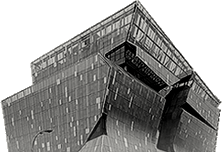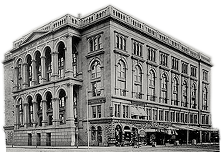Between Leading and Listening
POSTED ON: September 28, 2017

By Sarah Philips
When I first signed up for a Teaching Assistant position at the summer, I never could have expected the wild ride that my July was about to become. Over the course of the Cooper Union Summer Art Intensive, I grew to empathize with and understand my own teachers to a degree that I never had before. I realized the amount of emotion, time, and energy they expend in order to help their students. As a TA, I was in a strange position, both teacher and student while being truly neither. Working one-on-one with Rob, my drawing instructor, required a vastly different mindset than when I was working directly with my students. I found that not only did the students often come to me for serious questions about Cooper and impending college applications, but we were able to share a certain humor, unadulterated by the compounded stresses of life and work after high school. Being closer in age and experience, they were less intimidated by me and more open to being playful.
In my short stint as a TA, in my view to teach is to straddle a line between leading and listening, serious and experimental. The students have to feel like they have the power to ask questions and receive real answers. As a teacher, taking a student seriously is the first step for a student to take themselves seriously. This is what Rob and I strove to do in our drawing class. We gave our students the space to think for themselves. If we saw them struggling with a concept or technique, we would step in and lend them a hand, but otherwise they produced their art on their own. Our free form and somewhat vague prompts were devised to push students to interact with their materials and subjects in ways they probably hadn’t been encouraged to before. I believe this approach yields much more self-conscious and driven work.
Classes that focus on the purely representational aspects of drawing are useful, but miss the point of drawing as an exercise in thought. Drawing is a fantastic way to develop ideas visually and to communicate these ideas to other people or to your future self. The process of drawing is as important as the finished (or unfinished!) piece. To be aware of your inclinations, influences, observations, and anything else that might unconsciously push your work one way or another, and be able to take them apart and analyze them is a hard skill to learn and an even harder one to teach. It requires a degree of comfort, or at least familiarity, with uncertainty and anxiety. It’s arguably harder to work without constraints rather than within them; the key is to understand how you work and to develop your own constraints based on what you want to see.
High school is a time notable for its bureaucratic nonsense, college applications, parent signed forms, authoritative teachers, and stringent social groups that each jostle for the attention and energy of the student in question. These things strip power from the student and cause them to doubt themselves and distrust authority, while in turn conditioning them to expect these kinds of dynamics later in life. While I can’t yet do anything to fight this self-feeding cycle on a large scale, my goal in this program was to at least give my students a space where they could talk to me person to person, both serious and playful, and work things out for themselves. In this way, I hope I encouraged at least some of them to begin to break away from their precious conceptions about drawing, life and high school. Theirs is a tough trail to blaze, all we can do is try to give them the tools to do so.




